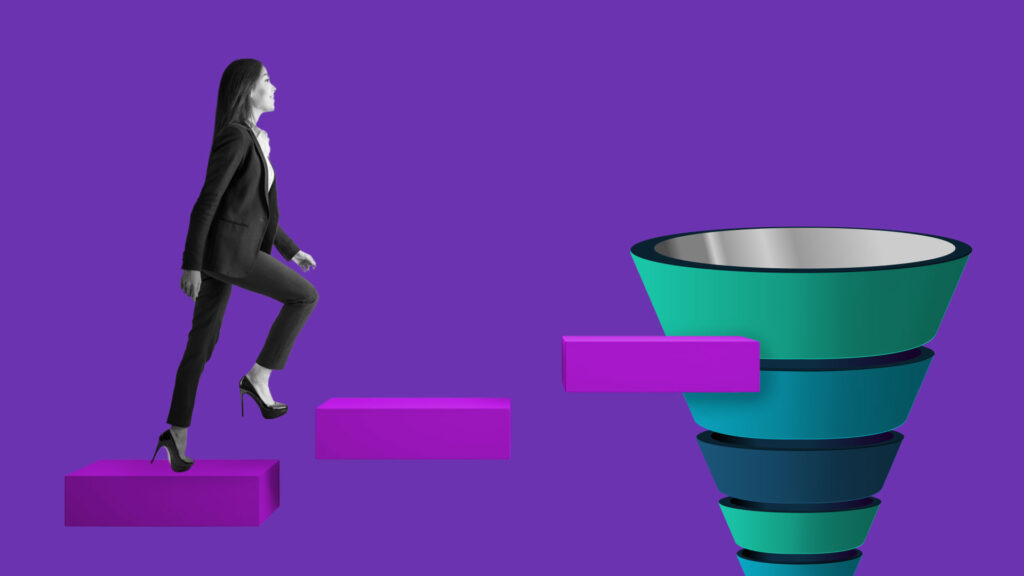Funnel Building: Steps to Create a High-Converting Sales Funnel

In the digital marketplace of 2025, a well-crafted sales funnel is a cornerstone of successful marketing. A sales funnel guides potential customers from initial awareness to final purchase, transforming curiosity into commitment. Building a high-converting sales funnel requires strategic planning, precise execution, and continuous optimization. This article outlines the essential steps to create a funnel that maximizes conversions and drives sustainable growth.
Understanding the Sales Funnel Framework
A sales funnel represents the customer journey, typically divided into stages: awareness, interest, decision, and action. Each stage serves a distinct purpose, guiding prospects closer to a purchase while filtering out those unlikely to convert. In 2025, with consumers bombarded by information, an effective funnel must be streamlined, targeted, and engaging to stand out.
The funnel’s success hinges on understanding your audience. Define your ideal customer profile—demographics, pain points, and motivations—using data from analytics tools like Google Analytics or CRM platforms. This clarity ensures each stage of the funnel addresses specific needs, creating a seamless path to conversion.
Crafting a Compelling Entry Point
The top of the funnel (TOFU) is where prospects first encounter your brand. The goal is to capture attention and spark interest. Effective TOFU strategies include content marketing, paid ads, and social media campaigns. For example, a blog post addressing a common customer pain point can draw organic traffic, while a targeted ad on platforms like Hulu or Instagram can reach specific demographics.
Content at this stage should be value-driven, offering solutions without overt selling. A fitness brand might create a free eBook on “10 Ways to Stay Active at Home,” positioning itself as a helpful resource. Ensure entry points are optimized for discoverability—use SEO best practices for organic content and precise targeting for paid campaigns to attract high-quality leads.
Nurturing Interest with Engaging Content
Once prospects enter the funnel, the middle stage (MOFU) focuses on building trust and deepening engagement. This is where leads evaluate whether your brand meets their needs. Email marketing, webinars, and case studies are powerful tools here, providing personalized, in-depth content that addresses specific concerns.
For instance, a SaaS company might send a drip email campaign showcasing how its software solves industry-specific challenges, including testimonials from satisfied clients. Personalization is key—use data to tailor content to user behavior, such as recommending relevant products based on website activity. Automation tools like HubSpot or Mailchimp can streamline this process, ensuring timely and relevant communication.
Driving Decisions with Persuasive Offers
The decision stage (BOFU) is where prospects are ready to choose. Here, the focus shifts to compelling offers that tip the scale toward purchase. Limited-time discounts, free trials, or exclusive bonuses can create urgency and reduce hesitation. For example, an e-commerce brand might offer free shipping for first-time buyers, while a B2B service could provide a 30-day trial with full access.
Clear, concise messaging is critical. Highlight the value proposition—what sets your product apart—and address objections like cost or complexity. A landing page for a subscription service, for instance, should emphasize benefits, include a strong call-to-action (CTA), and feature trust signals like customer reviews or security badges. A/B testing different offers or page designs can identify what resonates most with your audience.
Streamlining the Action Phase
The final stage, action, is where conversion happens—whether it’s a purchase, sign-up, or another goal. Friction at this point can derail even the most engaged prospects, so simplicity is paramount. Optimize checkout processes or sign-up forms to minimize steps and eliminate distractions. For example, a single-page checkout with autofill options can reduce cart abandonment rates, which studies show hover around 70% in e-commerce.
Post-conversion engagement is equally important. A thank-you email or personalized onboarding guide can reinforce the customer’s decision and lay the groundwork for retention. For instance, a software company might send a video tutorial to new users, ensuring they quickly see value in their purchase.
Leveraging Data for Optimization
A high-converting funnel requires continuous refinement. Analytics are the backbone of this process, providing insights into where prospects drop off and what drives conversions. Tools like Google Analytics, Hotjar, or CRM platforms can track metrics such as click-through rates, bounce rates, and conversion rates at each stage.
Regularly analyze data to identify bottlenecks. If a high percentage of visitors abandon a landing page, test changes like a clearer CTA or faster load times. Heatmaps can reveal how users interact with content, guiding design improvements. Optimization is iterative—small tweaks, like adjusting email subject lines or ad visuals, can yield significant gains over time.
Integrating Multi-Channel Strategies
In 2025, consumers engage with brands across multiple touchpoints, from social media to email to streaming platforms. A high-converting funnel integrates these channels seamlessly. For example, a prospect might discover your brand through a Hulu ad, visit your website via a retargeting campaign, and convert after receiving a personalized email. Consistency across channels—using cohesive messaging and branding—builds trust and reinforces intent.
Social proof is a powerful enhancer. Incorporate user-generated content, such as Instagram posts from satisfied customers, or display reviews on landing pages. A clothing brand, for instance, could showcase customer photos wearing its products, creating an authentic connection that encourages conversions.
Addressing Common Pitfalls
Even well-designed funnels face challenges. One common issue is misalignment between stages. If TOFU content attracts the wrong audience, later stages will struggle to convert. Ensure all content aligns with your target customer’s needs and journey. Another pitfall is neglecting mobile optimization—over 60% of web traffic in 2025 is mobile, so funnels must be responsive and fast-loading on all devices.
Overcomplicating the funnel can also deter conversions. Avoid overwhelming prospects with too many steps or options. A streamlined funnel with clear CTAs and minimal friction outperforms complex designs. Finally, failing to follow up with leads who don’t convert immediately is a missed opportunity. Retargeting ads or nurturing emails can re-engage these prospects, often at a lower cost than acquiring new ones.
Scaling for Long-Term Success
As your funnel matures, scaling becomes the focus. Expand reach by testing new channels, such as emerging platforms or partnerships with influencers. For example, a beauty brand might collaborate with a TikTok creator to drive TOFU traffic, then retarget those viewers with Hulu ads. Invest in automation to handle increased lead volume without sacrificing personalization—tools like ActiveCampaign can segment audiences and deliver tailored content at scale.
Retention is the final piece of the puzzle. A funnel isn’t just about acquiring customers; it’s about fostering loyalty. Post-purchase strategies, such as loyalty programs or exclusive content, encourage repeat business. A subscription box service, for instance, could offer discounts for long-term subscribers, turning one-time buyers into loyal advocates.
Measuring and Sustaining Funnel Performance
A high-converting sales funnel is a living system, requiring ongoing attention to maintain performance. Establish key performance indicators (KPIs) for each stage—traffic for TOFU, engagement for MOFU, and conversion rates for BOFU. Regularly review these metrics to ensure the funnel aligns with business goals. For instance, if the goal is to increase revenue by 20%, focus on optimizing high-value conversion points, like upsells during checkout.
Customer feedback is invaluable. Surveys or social listening can reveal pain points or preferences, informing future iterations. Additionally, stay attuned to market trends—new technologies or shifts in consumer behavior, like the rise of shoppable ads on streaming platforms, can open fresh opportunities to enhance your funnel.
By following these steps—defining your audience, crafting compelling content, optimizing with data, and scaling strategically—marketers can build sales funnels that not only convert but also foster lasting customer relationships in the competitive landscape of 2025.



